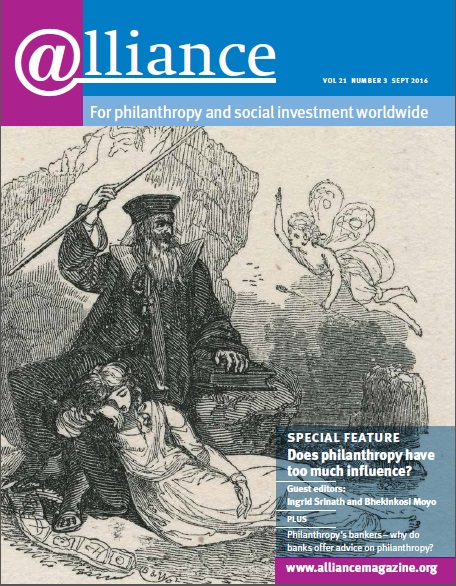How has the scale of philanthropy changed in the last decade in India?
Philanthropy in India is coming full circle. A century ago the country was economically struggling but at the forefront of global philanthropy owing to families like the Tatas and Godrej. Those economic struggles only started ebbing after liberalization in the 1990s. While that unleashed a lot of wealth creation, it was not accompanied by a corresponding giving back to society. The last decade has been different as clear leaders of India’s philanthropic movement emerge. They are bold in setting targets for how much they want to give and what problems they want to solve, and in many cases they are deeply involved in solving them. This is extremely encouraging for the future of the country.
Which people and causes benefit most from philanthropy in India?
As Bain’s 2015 report[1] shows, education and child welfare are the most popular causes. Around 54 per cent of high net worth donors gave to education and 41 per cent to child welfare in the period covered by the report. But there are other areas that need support. Only around 25 per cent gave to disability, for instance, and only 11 per cent to environmental causes.
Which issues are underserved?
Pretty much every issue. Even children’s education, the area that attracts most attention, has abysmal outcomes and needs huge investment for decades to come. In addition, there are areas of India that are massively neglected and crying out for attention – large parts of rural India, the north-east and the tribal areas. Agricultural incomes, financial literacy and mental illness are all much neglected.
‘Philanthropy is deeply personal to the individual. It is her or his way of giving back to the society that has helped create their wealth in the first place. Therefore, people will take widely divergent routes: some will build institutions that throw up leaders, others will fund movements that bring change.’
What should be the priorities for philanthropy in India? For example, should philanthropy do more to strengthen India’s civil society, and human rights organizations, at this time?
I personally don’t think there is anything special about ‘this time’ which means that human rights organizations need more support than at other times. If anything, the media in India have greatly sharpened the focus on human rights.
Philanthropy is deeply personal to the individual. It is her or his way of giving back to the society that has helped create their wealth in the first place. Therefore, people will take widely divergent routes: some will build institutions that throw up leaders, others will fund movements that bring change. I have personally been deeply inspired by Jamshetji Tata and Chuck Feeney. My wife Archana and I, on a much smaller scale, help build world-class institutions – schools, universities, hospitals – that will serve our country, often in collaboration with others.

Pupils at the Jai Vakeel School, set up by Amit Chandra and his wife, Archana. Credit: Alex Betcher.
There are two other things we try to do. We invest in the capacity of organizations serving the social sector, since many people are happy to fund programmes but not to invest in capabilities. The other is ecosystem investments that help connect the dots in a rapidly developing sector. We think of our money as transformative, high-risk capital, which should seek a very high social return without fearing failure.
‘Of course there are dangers to anyone who seeks to exert any sort of influence that challenges the status quo. It is human nature for vested interests to fight back hard. Vested interests in social issues in India run deep and therefore the risks one faces are sometimes significant.’
What potential risks does philanthropy face in India?
Whenever one steps out of one’s confines and engages with society, whether professionally or socially, one encounters some form of risk. Philanthropy is no different. Of course there are dangers to anyone who seeks to exert any sort of influence that challenges the status quo. It is human nature for vested interests to fight back hard. Vested interests in social issues in India run deep and therefore the risks one faces are sometimes significant.
Can you see any downsides to a growing role and power for philanthropy in India?
There will definitely be downsides: without pain, there will be no gain! It’s an imperative for our rich and our middle class to connect with the rest of the country and for everyone to come together to build a better society. The government alone can’t and won’t do this. Philanthropists engaging in social causes will not be 100 per cent successful but as in the corporate world there are far more successful enterprises than failures. They will find a way to make their money and reputations count and we will see interesting ideas and ventures emerge which will start changing the face of India. Importantly, it will also bring government, philanthropists and the rest of society closer to each other and help them understand each other better as they engage more in dialogue on key issues.
Amit Chandra is managing director of Bain Capital Advisors. Email achandra@baincapital.com
Footnotes
- ^ Bain & Co Indian Philanthropy Report, 2015 www.bain.com/publications/articles/india-philanthropy-report-2015.aspx








Comments (0)